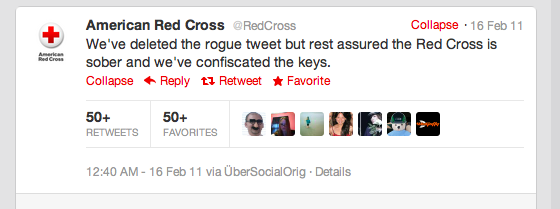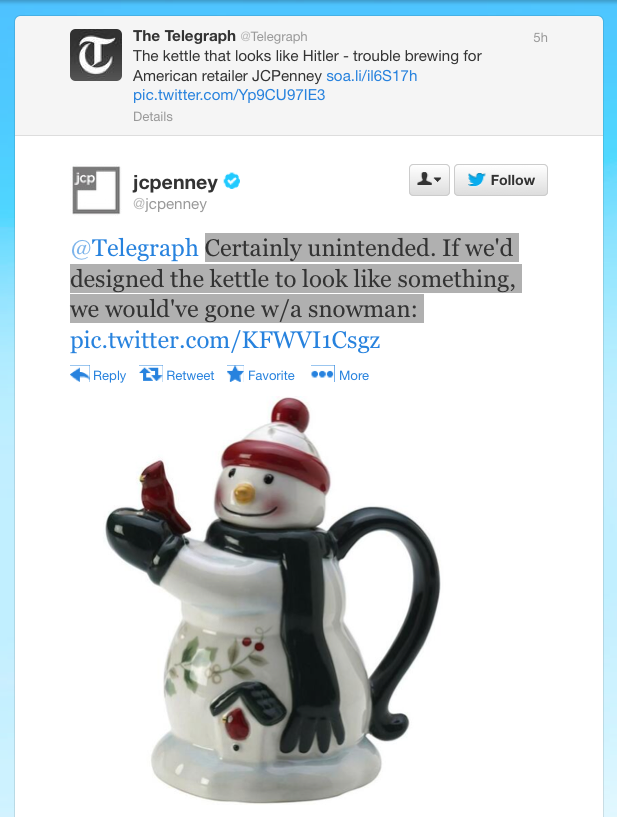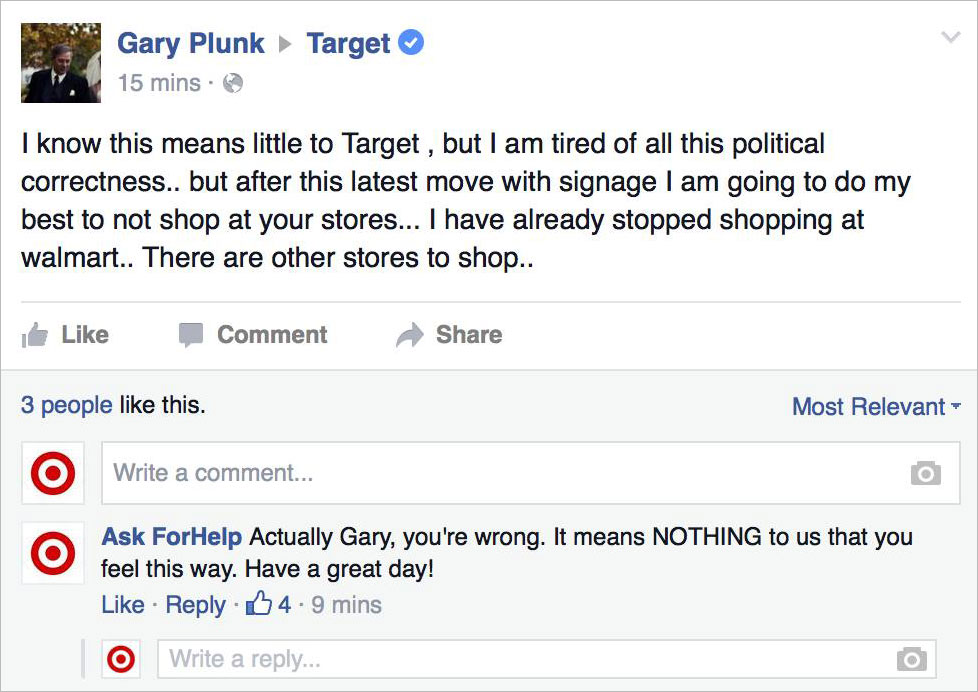Social media is a powerful channel to connect and meaningfully engage with consumers around the world. Many brands have successfully built genuine relationships, resulting in increased customer loyalty and advocacy. But that doesn't mean everything is fine and dandy.
As users are free to voice their opinions online, it can feel like the Wild West — unethical, immoral and almost outside the purview of the law. This article details how can you manage your brand image and communication on social media with moderation. That said, let's start with the basics.
- What is social media moderation?
- Why should you consider social media moderation?
- Use this core structure for social media moderation
- How your brand can enforce social media moderation effectively
- Social media moderation best practices
- How big brands aced social media moderation
- Ready to get social media moderation right?
What is social media moderation?
Social media moderation refers to checks and actions on user-generated content (UGC) against platform guidelines, local laws, social safeguards and most importantly truthfulness. It does not mean censorship of critical opinions or restricting freedom of speech.
For companies, social media moderation extends beyond what platforms are concerned with. A brand's social media moderation involves positive interactions on critical reviews, handling crises adeptly and responding to basic customer issues.
But do you need to invest in moderation, though? Well, here's how important this could be for your brand.
Why should you consider social media moderation?
Brands are often hit by issues like negatively biased reviews, spamming and trolling. But social media platforms don't address such issues on their own. When such issues are left unmoderated, companies can suffer a loss in revenue, reputation and control over their brand image.
This is perfectly shown by an article published on NBC News, which reveals that luxury fashion brands lost approximately $30.3 billion in sales due to counterfeit products online.

Moreover, social media is flooded with inaccurate information. Platforms only provide fact verification or cautionary labels, primarily for content involving social, political or personal harm. This is why companies with a strong brand must have their own mechanisms for moderation.
If social media moderation is so crucial, how do you do it right?
Use this core structure for social media moderation
Moderation is inherently complex, but it isn’t rocket science either. It demands careful observation, comprehensive understanding and positive communication. Establishing a framework around moderation is important.
Here's a core structure to consider:
Dedicated moderation team
Given social media's unique demands, moderation has to be a specialized function. Moderation requires contextual assessment, technical proficiency and deep alignment with brand values.
This ensures that case resolution is done with greater accuracy. The volume of moderation cases is often large for shared resources to handle. This underlines the need for a dedicated social media moderation team.
Guidelines and policies
A brand's social media guidelines and policies give a framework for moderator execution. Guidelines and policies cover code of communication, prohibited content, privacy, cultural sensitivity and legal compliance.
Needless to say, the moderation team must be well-versed with the guidelines and policies of both the brand and the social media platform.
Monitoring and automation tools
Platforms generate massive amounts of user-generated content. Manual detection and resolution don't scale well. That’s where social media automation tools play a crucial role in moderation.
These make for real-time detection, work round the clock and enable the moderation team to scale their efforts and ensure brand monitoring. Automation on the other hand enables processes like moderator allocation and escalation.
A great way to go about your moderation efforts and safeguard your brand's image is with modern social media automation solutions which seamlessly integrate approvals, regulations and content moderation within a unified framework. This way, you can make the most of enterprise-level protection against any negative brand associations.
Review and reporting process
Content evaluation is one of the most critical tasks of moderation. It's a complex decision-making process for reviewing and reporting content to the social media platform. It involves content flagging, categorizing violations and making decisions based on context and severity. Combining human judgment with systematic evaluation, the moderation team plays a vital role in protecting the brand on social media platforms.
Crisis management plans
Crises, more often than not, happen unexpectedly. Moderation teams must be prepared for worst-case scenarios with crisis management plans to protect the brand's reputation and preserve trust. Additionally, you can use learnings from incidents for future crisis management improvements.

Read More: How to effectively manage a social media crisis and save your brand in 2023
How your brand can enforce social media moderation effectively
To establish a strong moderation framework, teams require certain qualitative improvements. Here are some key elements of how you can implement social media moderation effectively:
Empathy culture
Fostering an empathy culture within the moderation team is critical. Team members should understand the diverse perspectives and backgrounds of social media users, which aids in addressing sensitive issues. Empathy promotes a balanced approach to content assessment, allowing moderators to deliver positive communication.
Continuous training
Trends, societal sensitivity and user behavior on platforms are evolving faster today. Regular training sessions can keep moderators up to date, such that they can effectively identify and tackle new challenges.
Constructive dialogue
Brands always face criticism on social media. Companies cannot censor content criticizing their brand. To address criticisms, moderation teams can engage critics in a constructive dialogue. Brands can turn criticism into opportunities to be responsive and showcase their commitment to concerns.

Escalation process
Moderators often come across complex and controversial cases. When faced with content that falls in a gray area, moderators should know how to seek guidance from senior staff. This process prevents undue burden on moderation executives and enables consistent decision-making.
Regular auditing
Conduct regular audits of moderation decisions to identify trends, assess accuracy and address any potential biases. Auditing promotes ongoing improvement in moderation practices.
Also Read: What is Social Listening: Importance, Benefits and Strategies
Social media moderation best practices
Efficient social media moderation requires a combination of various strategic approaches to ensure user safety, content integrity and a positive online environment. The following are some of the essential best practices that contribute to successful moderation efforts:
Real-time response
A swift response to user cases and concerns is vital. Timely intervention not only prevents the escalation of inappropriate content but also demonstrates a brand's strengths. Implementing a monitoring system that triggers immediate alerts enables moderators to address issues promptly.
Using artificial intelligence
The integration of AI technologies can drastically enhance the moderation process. AI algorithms can intelligently identify patterns in content, aiding in the detection of spam, negative content and other issues with great efficiency.
This can help moderators save time in validating an issue and reduce false alarms. However, human oversight remains essential to avoiding potential biases or misinterpretations that AI systems might make.
Pro tip: There are AI technologies to improve customer experience where you can work on dashboards for one or more of your social media channels and specify the type of analysis you wish to apply to moderate the content. They are customizable to not only the specific channels but also selected posts or videos.
Give feedback
In cases where social media users might not have intended to offend, an action on their post or comment can lead to confusion. It’s crucial to communicate the reason behind the moderation actions. This approach ensures transparency and helps users understand the rationale behind the moderation action.
Moderation team diversity
Building a diverse moderation team ensures a wide range of perspectives in content assessment. A diverse team can identify the potential biases of team members and provide well-rounded viewpoints.
Diversity in the team can also enrich the team's ability to understand cultural nuances and varying interpretations, ensuring a fair and inclusive moderation process.
Encourage critical inputs
It may seem counterintuitive but at times the criticisms have a hidden reason that hasn’t been posted by the user. By asking posters for more critical inputs, your brand can learn about what really went wrong and try to address the concerns effectively, if they are genuine. This can become a great way to manage social media user reviews.
How big brands aced social media moderation
Big brands have learned how to navigate the unpredictable nature of online platforms, showcasing their adeptness at handling unexpected situations with social media moderation. Let's see how some well-known brands aced social media moderation to maintain their reputation and engage with users effectively:
JCPenney — Handling a social media crisis
JCPenney was unexpectedly struck with controversy. It all began with a user on the social bookmarking platform Reddit who jestingly pointed out the uncanny likeness between JC Penney's banner and Adolf Hitler.

However, the remark didn't confine itself to the boundaries of Reddit's virtual space. Rather, it swiftly gained traction beyond Reddit's sphere, catching the attention of wider audiences. Consequently, JCPenney found itself compelled to respond as the matter took an unexpected turn, escalating into a notable yet unusual narrative.

JC Penney demonstrated adept brand crisis management by addressing the situation promptly, recognizing the potential for a minor issue to spiral into a social media disaster if mishandled.
In a smart move, it took a light-hearted approach in responding to numerous tweets regarding the “sinister” teapot by using a standard, playful message, countering harmful humor with positive humor. Remarkably, what could have been a crisis turned into an advantage for JC Penney, as the incident significantly boosted their teapot sales.
Key takeaway: Seemingly small matters can gain traction on social media, in which case, it becomes important to protect brand reputation. JCPenney demonstrated masterfully how brands can deal with crises.
McDonald’s — Converting a negative trend into a positive one
McDonald's experienced an unexpected negative trend emerging. Dubbed the "Grimace Shake," TikTok users crafted horror-movie-like scenes, humorously mimicking the supposed effects of consuming McDonald's new milkshake.

In response to the trend, McDonald's showcased a savvy approach, embracing the playful nature of the videos rather than opposing them. The fast-food giant shared an Instagram post featuring Grimace, one of their iconic characters, accompanied by a humorous caption acknowledging the trend. While this certainly wasn't the promotion McDonald's originally had in mind for their product, the brand smartly aligned with the trend's humor.
Despite the unexpected twist, McDonald's demonstrated flexibility in their response, recognizing that online trends can be unpredictable. By engaging with the trend rather than fighting it, the company exhibited a practical, adaptable and customer-centric approach to handling the unexpected spotlight.
Key takeaway: Negative trends can come out of nowhere. This response teaches us how responding with a light touch to unexpected situations can reduce the impact of a negative trend.
Target — Managing social media trolls
Target's handling of social media trolls sheds light on the crucial role of social listening. The incident unfolded when Target announced gender-neutral signage, receiving mixed reactions.
Seizing the opportunity, trolls with fake accounts posed as Target service representatives, crafting witty responses to customer queries. This negative exchange highlights the need for brands to actively monitor online conversations and remain vigilant.

The incident shows the potential harm impersonation can cause and the ease with which such incidents can arise. While this particular prank was not too harmful, brands must recognize the potential for more damaging impersonations and be prepared to manage their image effectively. Social listening tools can help brands in staying attuned to public conversations and identifying any impersonations or misrepresentations promptly.
Additionally, the case hints at the emergence of copycats mimicking such pranks in response to significant brand announcements. This emphasizes the importance of investing in social listening capabilities, especially during divisive announcements. The incident's relatively light-hearted outcome shows the significance of a measured and adaptable response.
Key takeaway: The Target incident reiterates the importance for brands to monitor and engage with online conversations. Active social listening and moderation help respond to challenges, maintain brand reputation and foster a stronger connection with audiences.
Ready to get social media moderation right?
With the increasing complexity of social media, it’s critical to invest in a social media moderation tool. Dedicated moderation teams armed with contextual understanding, tools and guidelines help accelerate case resolution.
Clear guidelines serve as a compass, aligning actions with brand values and platform policies. Real-time monitoring, powered by automation, maintains brand integrity around the clock. For instance, by combining your social media team's capabilities with Sprinklr's AI-powered social listening tools, you get the power to monitor over 500 million daily conversations.
Ready to take your social media marketing moderation efforts to a whole new level? Try Sprinklr today. What’s more, you can easily determine the effectiveness of your social media marketing through performance metrics, comparative analysis, campaign tracking and robust reporting capabilities of Sprinklr.
Frequently Asked Questions
Yes. Effective moderation ensures healthy and genuine interactions and meaningful discussions. When users feel safe and valued, they are more likely to engage positively with your brand.


![10 AI Writing Prompts In Content Marketing [2024]](https://images.ctfassets.net/ukazlt65o6hl/7BXUq8Ns0vCgornXApT0Uz/572755ba099aecf279675903caf526b6/Blog_Banner_Image.png?w=750&h=505&fl=progressive&q=70&fm=jpg)

